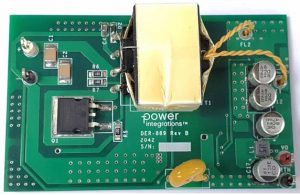
This huge input range is needed within the emergency dc-dc PSU built into electric vehicle traction inverters – the control-side of EV inverters is powered from the vehicle’s 12V battery, and the emergency PSU is there to take over should the 12V battery supply fail.
1.2kV batteries, according to PI, are already used in electric commercial vehicles, and are seen as a possible next step in cars which are already shifting from 400V to 800V, and testing 900V, in high-end models to save weight (the 800V Porche Taycan is said to have 25kg less copper than it would need for 400V operation).
But why not use the existing 750V automotive InnoSwitch in a cascode arrangement for nominal 1,200V operation?
“If the external mosfet has a higher voltage rating, it will be less efficient,” PI told Electronics Weekly. “A 750V InnoSwitch will need a 1,200V mosfet, but the InnoSwitch with a 900V mosfet inside will only need an 800V mosfet outside – you get better losses, and better power control, with two fets of a similar voltage.”
Even with the external cascode mosfet, the DER-889Q reference design still offers short-circuit protection and power-limiting. No load consumption is <36mW at 800V. Full output current is only available over 6oVin – below this the inverter control circuit will not be switching and requires less power, explained PI.
If the dc-dc converter is only going to be used in emergencies, briefly to bring the vehicle to a halt, why bother with a synchronous rectifier to boost efficiency?
Two reasons, PI told Electronics Weekly: Firstly, the automotive industry insists that is should be able to run continuously, and this design is intended to run without a heatsink. Secondly, now that accurate 12V regulation is available from the emergency dc-dc – as opposed to earlier primary-side regulated versions – vehicle companies may consider switching to using the dc-dc as the full-time inverter power source and demoting the 12V battery to emergency back-up.
The DER-889Q reference design can be found here
The INN3996CQ product page is here
Power Integrations authorized distributors include Digikey, Farnell, Mouser, and RS Components.